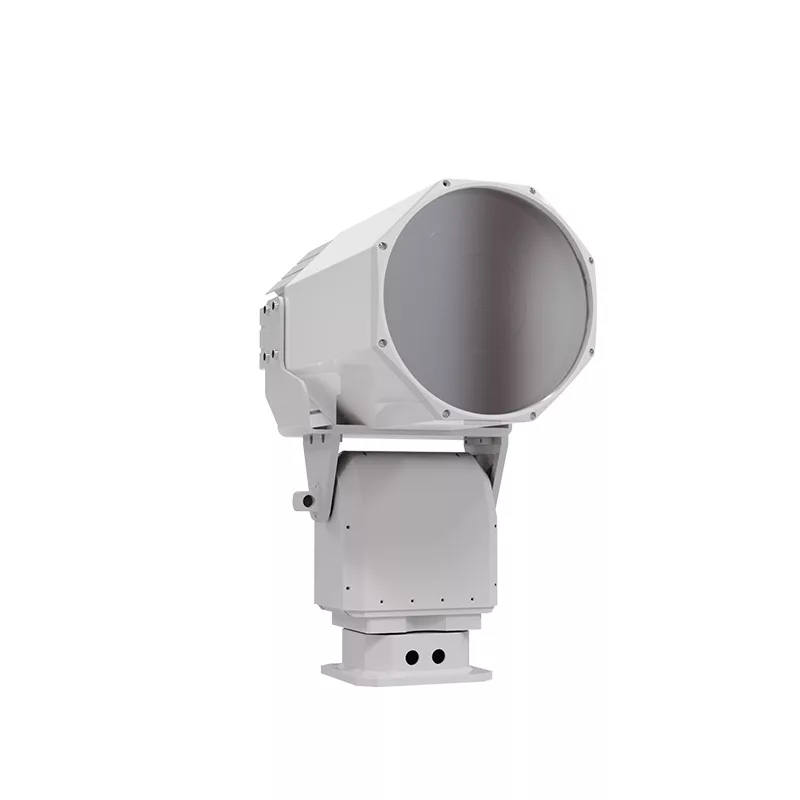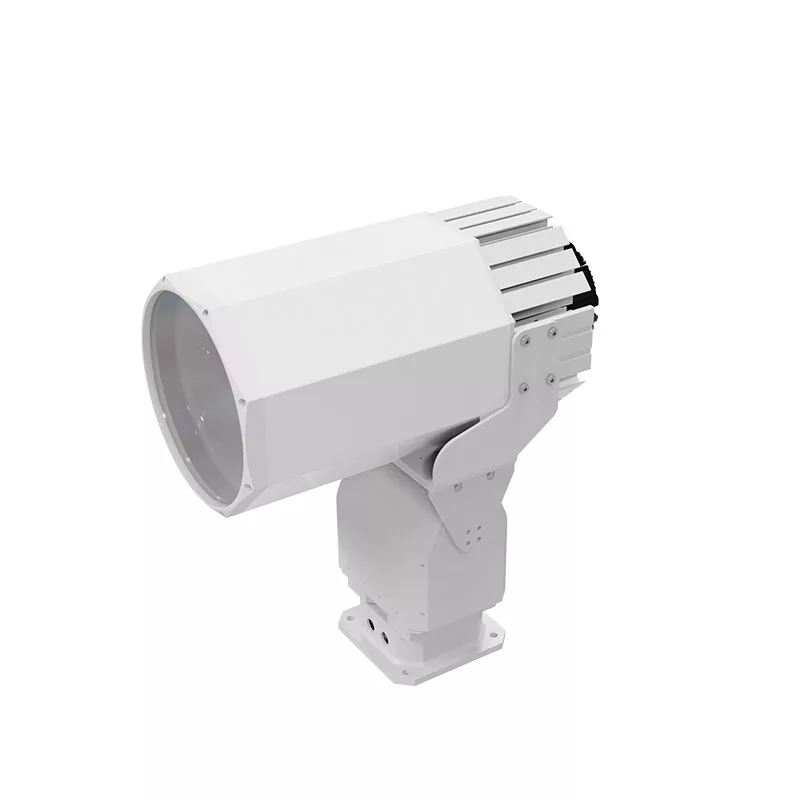A searchlight is a device that produces a powerful beam of light, typically used for outdoor lighting purposes. It is often used to illuminate large areas, such as stadiums, construction sites, or emergency scenes. Searchlights can be manually operated or automated, and they are usually mounted on a rotating base to allow for easy adjustment of the beam direction. They are commonly used for security purposes, as well as for entertainment events or advertising purposes.
The requirements for searchlight can vary depending on the specific application and purpose. However, some common requirements include:
Searchlight Brightness
Searchlights are typically required to produce a high-intensity beam of light that can illuminate objects at long distances. The brightness of a searchlight is usually measured in lumens.
Understanding Candela and Beam Intensity
While lumens measure the total amount of light emitted, candela (cd) tells us about the intensity of a light source in a specific direction. For searchlights, candela is crucial, as it determines the beam's penetrating power and how far it can illuminate objects. High-powered searchlights can reach millions of candela, piercing through darkness and revealing details at great distances.
Beam Angle and Spread
Focusing the Power:Searchlights typically use reflectors or lenses to concentrate light into a narrow beam. The beam angle determines how wide the illuminated area is at a given distance. A narrow beam with high candela is perfect for pinpointing objects far away, while a wider beam offers better situational awareness in closer proximity.
Color Temperature and Visibility
Not all light is created equal, and color temperature plays a role in searchlight efficiency. Cooler white light (higher Kelvin temperature) penetrates better through fog and haze, making it ideal for search and rescue operations. Warmer whites are better for general illumination and revealing color details.
Advanced Features and Considerations
Modern searchlights often come with features like pulse modulation for increased visibility, remote control for beam direction adjustment, and filters for specific applications like wildlife observation or marine search. Additionally, factors like power source (battery, mains, etc.) and durability in harsh environments are crucial for choosing the right searchlight for your needs.
Examples and Comparisons
To put things in perspective, let's compare some searchlight brightness levels:
A small handheld searchlight might have around 100 lumens and 1000 candela, illuminating objects a few hundred meters away.
A powerful marine searchlight could reach several thousand lumens and millions of candela, revealing details on ships several kilometers distant.
Military searchlights used for long-range surveillance can go above 100 million candela, penetrating darkness for extreme distances.


Searchlight Range
Searchlights are often used for long-range illumination, so they need to have a sufficient beam distance to cover the desired area. The range of a The range of a searchlight can be affected by factors such as the power of the light source and the design of the reflector.
Power of light source: The higher the power of a searchlight, the longer its range. For example, a 100-watt searchlight usually has a range of about 1 kilometre, while a 1,000-watt searchlight can have a range of up to 10 kilometres.
Beam angle: The narrower the beam angle of a searchlight, the longer its range. For example, a searchlight with a 10-degree beam angle will typically have a longer range than a searchlight with a 60-degree beam angle.
Target Reflectance: The more reflective a target is, the more visible it is. For example, a white target is more easily illuminated by a searchlight than a black target.
Typical range of searchlights:
Handheld searchlights: 200 metres to 500 metres
Vehicle mounted searchlights: 500 metres to 1 kilometre
Military searchlights: 1 kilometre to 10 kilometres
Searchlight Durability
Searchlights may be used in harsh environments and exposed to various weather conditions, so they need to be built to withstand these conditions. They should be durable and resistant to impacts, vibrations, and corrosion.
Weatherproof Encasing: The housing of a durable searchlight needs to be a fortress against the elements. High-grade aluminum, impact-resistant polymers, and corrosion-resistant alloys are common choices. Strong seals around seams and connections prevent moisture infiltration, ensuring functionality even in heavy rain or snow.
Sealing Technology: Internal components like wiring and circuits are vulnerable to moisture and dust. Advanced sealing techniques like O-rings and gaskets create a barrier, preventing corrosion and malfunction.
Corrosion Defiance:Saltwater and Chemical Resistance: Marine environments and industrial settings expose searchlights to harsh elements like saltwater and aggressive chemicals. Using corrosion-resistant materials like marine-grade stainless steel and employing protective coatings on internal components significantly increases their lifespan in such environments.
Smart Design: Thoughtful design goes a long way in enhancing durability. Features like recessed controls, protected switches, and shielded connectors minimize the risk of accidental damage.
Quality Manufacturing: Precision engineering and stringent quality control guarantee that every component is built to last, ensuring the searchlight performs reliably in the most demanding situations.
Searchlight Power Source
Searchlights require a reliable source of power to operate. This can be achieved through batteries, generators, or direct electrical connections. The power source should be able to provide enough energy to support the desired brightness and range of the searchlight.
Searchlight Control Otions
Searchlights often have different control options to adjust the beam angle, intensity, and other parameters. These controls can include manual switches, remote controls, or computerized systems.
LED Marine Searchlight Video
Searchlight Mounting Options
Searchlights need to be mounted securely to the desired location, whether it's a vehicle, a building, or a portable stand. The mounting options should provide stability and flexibility in positioning the searchlight.
Choosing the right one depends on your specific needs and the intended use of the searchlight:
Fixed Mounts
Permanent Mounts: These offer the strongest and most secure attachment, ideal for stationary applications like building facades or security towers. Options include:
Wall Mounts: Simple and sturdy, perfect for vertical surfaces.
Pole Mounts: Clamp or bolt onto poles for flexible placement and height adjustment.
Embedded Mounts: Integrated into structures for a seamless, flush look.
Removable Mounts
Vehicle Mounts: Designed for secure and adaptable attachment to cars, trucks, boats, or other vehicles.
Magnetic Mounts: Quick and easy, ideal for temporary placement on metal surfaces.
Suction Mounts: Similar to magnetic mounts, but stick to non-metallic surfaces.
Roof Rack Mounts: Clamps or brackets attach to existing roof racks for stable positioning.
Hitch Mounts: Securely fasten to trailer hitches for convenient carrying and deployment.



Portable Mounts
Tripod Stands: Adjustable and lightweight, offer versatility for ground placement.
Handheld Grips: Simple and ergonomic, ideal for hand-held use and quick adjustments.
Magnetic Bases: Provide temporary but strong attachment to metal surfaces.
Additional Considerations
Weight Capacity: Ensure the chosen mount can handle the weight of your specific searchlight.
Movement Range: Choose a mount that allows for the desired level of adjustment and articulation.
Material Suitability: Match the mount's material to the surface it will be attached to and the environment it will be used in.
Ease of Installation and Removal: Consider how easy it is to set up and take down the mount, especially for portable applications.
By understanding these options and tailoring them to your specific needs, you can ensure your searchlight shines brightly and securely in any situation. Remember, a reliable mount is your searchlight's anchor, guiding its illuminating power wherever it's needed most!
I hope this information helps you navigate the world of searchlight mounting and choose the perfect solution for your next adventure! It's important to note that these requirements can vary depending on the specific application of the searchlight, such as military, marine, or outdoor recreational use.
